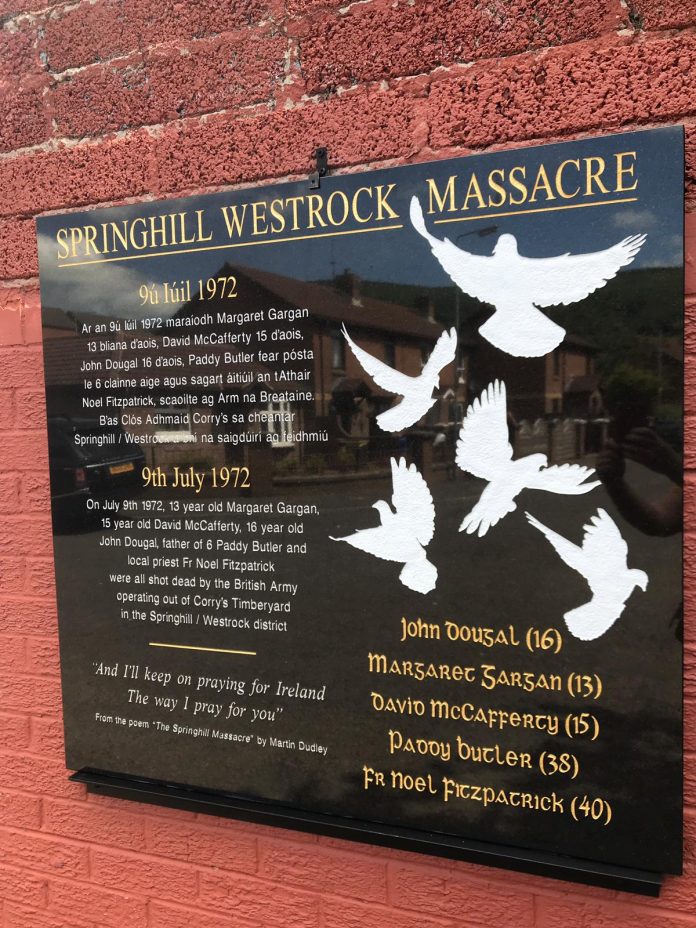The inquest into the deaths of five people killed by the British Army in the Springhill/ Westrock area opened Monday 20th February. High Court Judge David Schofield opened the inquest offering his condolences to all of the families on the loss of their loved ones. Three of the victims were teenagers, John Dougal 16, David McCafferty 15, Margaret Gargan 13. The other two people were 37-year-old Paddy Butler and Fr Noel Fitzpatrick 42.
Counsel for the Coroner Martin O’Rourke outlined the task facing the inquest. This inquest said Mr. O’Rourke faces the challenge of investigating deaths that occurred 50 years ago. During that period witnesses have passed away, the memory of some witnesses recalling events so long ago will be impaired – some were only children at the time. Moreover, the loss of records, especially military records, will also have to be taken into account when examining how the victims met their deaths. Nonetheless there is a significant volume of records from the original inquest as well as evidence and statements gathered by the Historical Enquiries Team (HET). There is also available a body of evidence and statements collected by organizations who supported the families in the years following the deaths. Martin O’Rourke noted that the evidential picture painted by many written statements from those who witnessed the events on that day is different to what others have said about how the victims were killed.
Of the five victims killed three were killed by a single shot to the head one was shot in the back and the other in the chest. None of the soldiers involved in the deaths, whose statements were read out at the original inquest, have been traced by the coroner’s office to date. However, Martin O’Rourke said that attempts to trace the soldiers were still ongoing.. Five soldiers who were referred to as Soldiers A, B, C, D, E and F at the original inquest said they all fired on gunmen However, no firearms were recovered from the scenes of where the victims were killed and there was no evidence that any of the five people had handled weapons despite the claims by the British soldiers that those killed were gunmen.
Martin O’Rourke said that on the day of the incident it was claimed that gunfire had been directed towards Corry’s Timberyard by the IRA. The British Army had taken over and used the timberyard as a military base in the early 1970s. It dominated the area and was spread over a large 26-acre site with a 20ft high fence. It was said that the location was a ‘high vantage point’ for the British Army. It was from Corry’s Timberyard that British Army soldiers fired and killed all five victims.
The British Army have stated that they had used legitimate force on the day whilst there have been counter claims that the force used was totally unjustified and that those killed were not gunmen. Martin O’Rourke said that the original investigations into the five deaths would not withstand modern day scrutiny and the inquest files prepared for the original inquest in 1973 would be viewed as totally inadequate. It seems inconceivable said Martin O’Rourke that inquests into the five deaths could be carried out in a single day. However, this’s inquest he said will bear no resemblance to that original inquest.”
The inquest will go beyond just examining the killing of the five victims it will also look at the planning and operations of the British Army leading up to the deaths and whether the force used was justified and lawful. Unlike the original inquest this inquest will rigorously examine the soldiers’ evidence and statements to determine whether they were justified in killing Patrick Butler, Father Noel Fitzpatrick, John Dougal, Margaret Gargan and David McCafferty.














